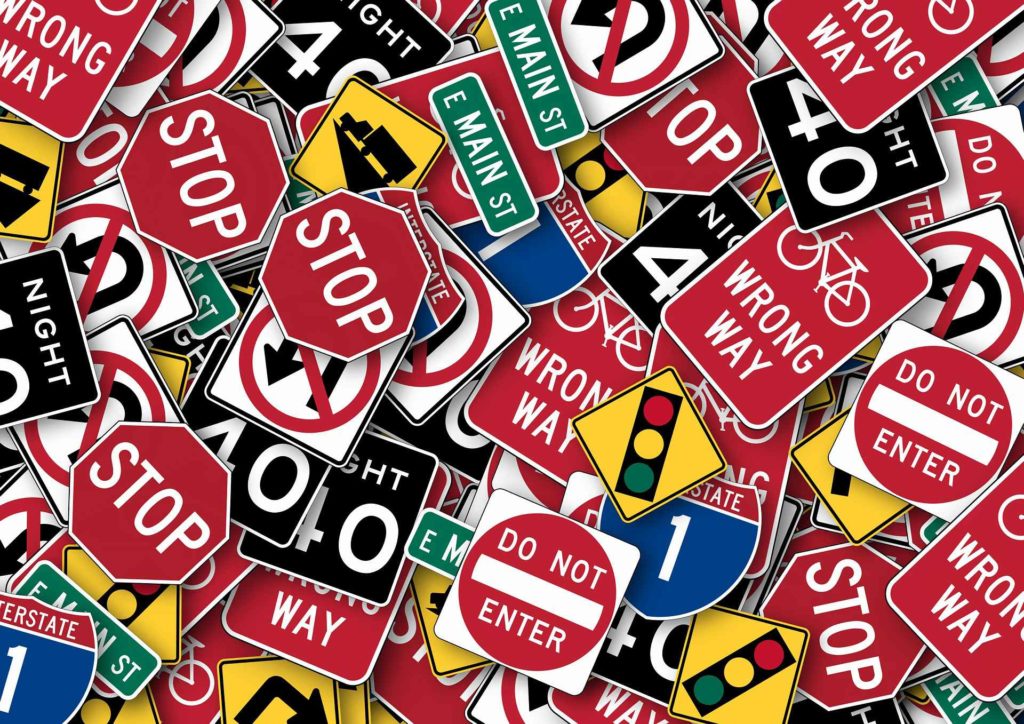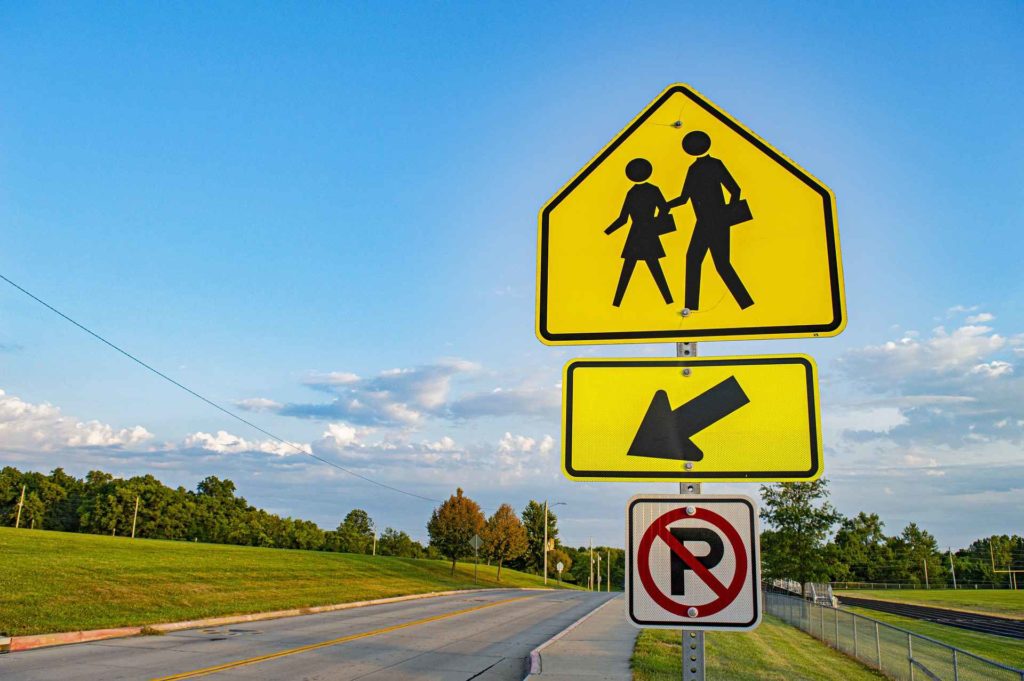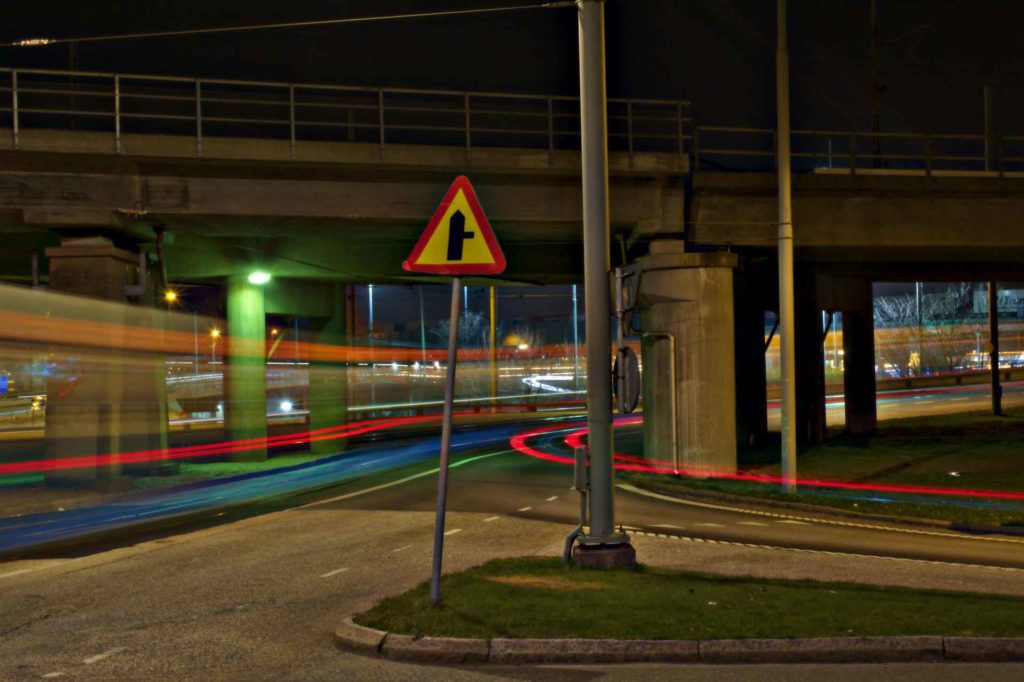A yield sign specifies that motorists must slow down and, if necessary, prepare to stop completely. It provides the right-of-way to other cars, bicyclists, or pedestrians. Yield traffic signs are crucial at intersections where most accidents occur.
Many motorists may not know which right-of-way rules apply on certain roadways. This ignorance may likely result in right-of-way accidents. These accidents represent 3,663 or 6.8 percent of driver and motorcycle operator fatalities in 2020.
If you know someone injured in a failure-to-yield accident, it is best to consult with a car accident attorney. Law firms usually provide free initial consultations to discuss your case. With the legal services of a car accident lawyer, you may recover damages for your losses due to a traffic accident.
Key Takeaways
|
Why are traffic signals vital?
Traffic signs warn drivers of traffic laws or regulations on highways and roads. It also prevents accidents and warns drivers about hazardous conditions. Traffic control devices apply to motorists, motorcyclists, bicyclists, and pedestrians.
It is illegal to ignore these traffic control devices. For instance, if a motorist ignores road signs and cuts through a parking lot, they might receive a traffic ticket. In addition, drivers must obey all signals and signs unless a police officer directs otherwise.
Traffic lights
Traffic lights control traffic to provide an orderly and smooth traffic flow. They are vital in keeping drivers and pedestrians safe on the road. Traffic lights have red, yellow, and green signals that have various meanings.
A red light requires drivers to come to a complete stop at a stop line, pedestrian crossing, or before entering an intersection. Motorists must wait until the traffic light changes colors to proceed with some exceptions.
All states allow vehicles to turn right on a red signal unless expressly prohibited. Some states allow turning left on a red signal under specific circumstances.
- Right turn on red: Drivers may only turn after they come to a complete stop.
- Left turn on red: Motorists may turn left on a one-way road and turn to another one-way street. They may turn after they come to a complete stop. Only five states have this exception.
- Red arrow: You must stop if you are going in the direction of the arrow. You may only proceed if the light turns green or a sign states otherwise.
- Flashing red light or arrow: It instructs drivers to stop and yield to oncoming traffic and road users. At a railroad crossing, motorists must stop completely even when a train is not present.
Generally, a yellow light or arrow warns motorists the light is about to change. Drivers must stop if they have yet to enter the intersection. If it is safe to do so, they may cautiously drive through. But speeding to beat the light is discouraged, as it may lead to T-bone accidents.
- Flashing yellow light: This indicates drivers must slow down and proceed with caution.
- Flashing yellow arrow: Motorists may turn in the direction of the arrow if the road is clear. The right of way is with vehicles coming from the other direction and other road users in the intersection.
A green light or arrow instructs drivers to proceed if the roadway is clear. But you must yield the right of way to oncoming traffic and road users if you turn without a green arrow. If the traffic light changes from red to green while someone is crossing, motorists must let them cross before turning.
If traffic signals are not working because of a power outage or other reasons, you must come to a complete stop. You may proceed to enter the intersection by following the right-of-way rules of a four-way stop. These rules apply unless a police officer or other authorized personnel is directing traffic at the intersection.
Lane use signals
These lights direct where motorists can and cannot drive during different hours of the day. There are several types of lane-use signals that drivers need to remember:
- Red X: Do not drive in a lane marked with a red X signal.
- Yellow X or yellow diagonal downward arrow: Drivers must move out of the lane as soon as possible.
- Green arrow: Motorists may drive in a lane with a green arrow light.
- Left-turn arrow: You may enter a lane with a one-way or two-way arrow, but only to turn in the direction of the arrow.
Who has the right of way?
Intersections and roads have varying right-of-way rules. Some might require drivers to slow down or completely stop before a yield line. In contrast, others require motorists to yield to the driver who arrived first or the driver on their right.
However, drivers must always yield to emergency vehicles, regardless of where they are. Likewise, pedestrians who are legally using crosswalks have the right of way.
Controlled and uncontrolled intersections
Traffic lights dictate who has the right of way in a controlled intersection. As discussed earlier, traffic signals mean different things. Motorists must obey what traffic lights indicate unless a police officer says otherwise.
There are no traffic lights or yield signs in uncontrolled intersections. It would be best if you yielded to the driver who first arrived at the stop in these locations. When in doubt, yield to the car on your right.
For example, suppose two motorists from opposite directions simultaneously reach an intersection. In that case, the driver turning left must yield to a motorist who is moving straight or turning right.
T-intersections
A T-intersection is a dead-end street that only lets you go left or right. If you are in a T-intersection, you must yield to those coming from your left or right. Motorists must also slow down or come to a complete stop at a yield line before they proceed.
Multiple lane intersections
Drivers on smaller roads must yield to those on larger roads before proceeding. It is because larger roads have higher speed limits. If you do not yield, it can quickly escalate to a traffic accident. The same rule applies to driveways, side streets, alleys, parking lots, private roads, and other similar circumstances.
Roundabouts
A roundabout or a traffic circle is a road junction in which traffic flows in one direction around a central island. Its design causes motorists to decrease speed, improve flow, and prevent accidents.
Drivers entering a roundabout should yield to cars that are already in it. They should also give way to any bicyclists or pedestrians in the circle.
While inside the traffic circle, remain in your lane until you are about to exit. Motorists must use their right turn signal to let other drivers know they are nearing their exit. If you miss the exit, you are not allowed to reverse. You must go around again.
The Colors and Shapes of a Traffic Sign


Motorists should not ignore traffic signs on the road, but they can overwhelm the uninitiated. Road signs are in shapes and colors instead of words to communicate information anyone can understand. The issue is many people don’t know what these shapes and colors represent. The following are explanations of these universal signs.
Colors
Traffic signs have specific colors associated with them. It could be red, black, yellow, green, white, etc. Here are examples of what each color means on a road sign.
- Red: usually used for stop signs, yield signs, and prohibitory signs that indicate a driver must not enter, turn, park, or perform a specific action.
- Yellow: used for warning signs that alert drivers to potential hazards, changes in road conditions, or the presence of construction or maintenance work.
- Green: used for directional signs that provide information about destinations, distances, and the direction of travel on highways and freeways.
- Blue: used for informational signs along highways and expressways that provide information on services, attractions, or other points of interest to travelers.
- Brown: used for signs that provide information about recreational areas, natural resources, and cultural or historical sites.
- Black: Generally used with white, these signs convey regulatory information. It includes no left turn, no U-turn, no parking, speed limit, and railroad crossbuck signs.
- Fluorescent yellow or green: Signs about pedestrians, bicycles, and school crossings.
- Orange: It is a temporary sign for changes in traffic control, maintenance, and road work zones.
Shapes
Like colors, sign shapes provide different information to motorists. Traffic sign shapes include octagons, triangles, rectangles, diamonds, and pentagons.
- Octagon (stop): An octagon sign will always mean stop. Motorists must come to a complete stop and may only proceed after vehicles or pedestrians have cleared the way.
- Triangle (yield): Drivers must slow down as they approach the intersection, and if needed, be prepared to stop completely.
- Rectangle (regulatory or guide): Vertical signs provide information about traffic laws. Meanwhile, horizontal signage may offer directions or information about a specific destination.
- Diamond (warning): It warns motorists about hazards or road conditions ahead. Drivers must slow down and drive cautiously.
- Pentagon (school zone or school crossing): These signs signify school zones and school crossings. Another sign may be attached to it to indicate the specific location of the crosswalk.
The Different Types of Road Signs


Traffic signs control traffic flow and may be regulatory, warning, guide, and construction and maintenance work zone signs.It is always the best idea to familiarize yourself with traffic signs. Recognizing them and understanding their meanings can help motorists make safe driving decisions more efficiently.
Regulatory signs
These signs state what you must or must not do on the road. They advise motorists about the direction of traffic, speed limits, parking restrictions, turning restrictions, etc. If drivers ignore regulatory signs, a police officer might fine them, or the motorist might receive points on their driving record.
Generally, regulatory signs are vertical squares or rectangles with a white background and black lettering, like speed limit and railroad crossbuck signs. Sometimes, black, white, and red are used for regulatory signs, like the no-left turn sign. In other cases, it might be red and white, like the yield, stop, wrong way, and do not enter signs.
Warning signs
They warn about conditions on the road ahead. It may include possible hazards or changes in road conditions. A warning sign on the road notifies drivers to slow down or change their travel path.
Usually, warning signs are diamond-shaped with black words or symbols on a yellow background. For instance, the no-passing zone sign indicates the start of a restricted area. Other examples include chevron signs, advisory speed signs, merging traffic, two-way traffic ahead, and lane ends.
Guide signs
Guide signs provide information on intersections and points of interest on a highway. Generally, guide signs are blue or green horizontal rectangles.
Green signs give directions on highways and highway interchanges. Highway signs are often posted the same way: two advanced signs and a third sign posted at the exit. It is crucial to post several signages about the same exit as drivers are traveling at high speed. They might miss a warning or an exit as they need to make one or more lane changes to the exit ramp.
Meanwhile, blue signs help motorists find restaurants, service stations, motels, and hospitals. It includes route markers, distance, and destination signs. Guide signs also include tourist-oriented directional signs, which can be blue or brown.
Construction and maintenance work zone signs
These identify construction, maintenance, or utility areas on a roadway. Motorists must slow down or stay alert when traversing these zones, as workers or equipment may be on the road. In addition, drivers must turn on their headlights when passing through a posted work zone, regardless of the time of day.
Work zone signs are usually diamond-shaped, with black lettering on an orange background. Some examples include workers ahead, road work ahead, and lane closed ahead signs.
What Pavement Markings Mean
Pavement markings provide information and guidance to pedestrians and motorists. They indicate which part of the road is safe to use and where passing is allowed. Colors and patterns of pavement markings mean different traffic regulations.
White lines
White lines divide vehicles traveling in the same direction. Generally, white pavement markings have three types: single broken, single solid, and double solid lines.
- Single broken: You may change lanes if the lane is clear of any hazard.
- Single solid: Motorists cannot change lanes unless they are to avoid danger.
- Double solid: Drivers must not cross for any reason. Double solid white lines also act as a barrier on the road.
Yellow lines
Yellow lines separate two-way traffic. Usually, there are four types of yellow lines: broken, solid, solid with broken, and double solid lines.
- Broken: If it is safe, motorists can travel across broken yellow lines to pass a car in front.
- Solid: Drivers must not change lanes. They may not cross a solid yellow line to pass another vehicle.
- Solid with a broken: You might be allowed to cross the line, depending on which line is nearer to your side. You may change lanes if traveling on the right of a broken yellow line. However, you may not cross if you are on the side of a solid yellow line.
Double solid: It indicates that drivers may not pass from either lane. There may be an exception when turning left to leave or entering another road.
Did You Know?
You could pursue an insurance claim if another driver’s negligence got you into an accident. For instance, another driver failed to yield right of way in a four-way stop, which caused you to strike a car.
Connect With an Experienced Car Accident Lawyer
It may be challenging to memorize all traffic signs, especially for new drivers. However, it would help if road users familiarized themselves with these road signals. A driver’s mastery of traffic laws will mitigate the possibility of a traffic ticket or an accident.
In the event of an unfortunate accident, drivers can seek legal guidance to seek damages for car accident injuries. Experienced car accident lawyers from The Personal Injury Center can guide you in building a claim. We also have legal resources to help accident victims understand their rights and recover fair compensation.
Seek legal advice from a car accident attorney. Book a free case evaluation with The Personal Injury Center to find the right lawyer.
FAQs on Knowing the Yield Right of Way Sign and Other Traffic Symbols
Who is responsible for a right-of-way accident?
Generally, those who disobey traffic laws are liable for a road accident. For example, you hit a straight-moving car coming from the opposite direction while making a left turn on an uncontrolled intersection. In this case, you are responsible for the accident. On the other hand, if you turned left at a green arrow light, the other driver may be at fault.
What injuries can I sustain if I disregard yield signs?
Various accidents can arise from ignoring yield signs. T-bone crashes, sideswipes, head-on accidents, and rear-end collisions may occur. The injuries you can sustain range from bruises to fractured bones and deep lacerations. You may also suffer from organ damage, whiplash, neck and back, and traumatic brain injuries.
Who has the right of way if four cars approach a four-way stop simultaneously?
If four cars approach a four-way stop simultaneously, the motorist who arrived first has the right of way and should proceed first. If two or more vehicles arrive simultaneously, the right of way goes to the driver on the right. If a driver stops at a four-way stop but does not have the right of way, they must wait for the vehicle with the right of way to go through the intersection before proceeding.
Drivers must approach four-way stops with caution and be prepared to yield the right of way to other vehicles. Drivers should also use hand signals to indicate their intention to turn and watch for other vehicles and pedestrians in the intersection. These practices can help reduce confusion and improve safety at four-way stops.



